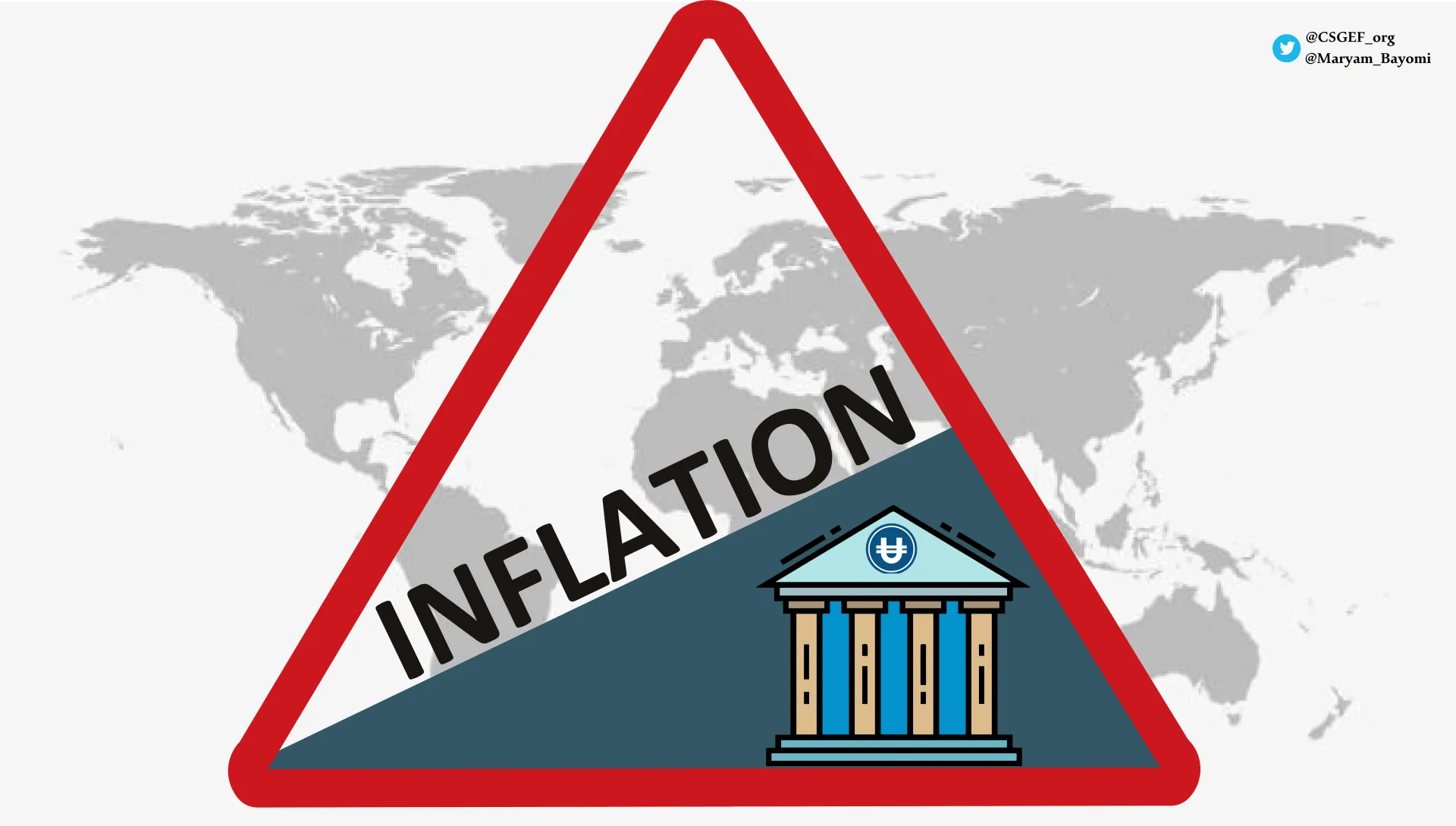The Return of Inflation?
FRANKFURT – After many years of low inflation, prices have risen almost everywhere in recent months. Energy and commodities have been leading the way, owing mainly to post-lockdown supply bottlenecks. But while such obstacles are widely seen as temporary, implying that the inflationary spike will disappear soon, other factors are at work as well, implying that it won’t.
Chief among these longer-term factors is the rapid growth of money. Most monetary aggregates (not just central-bank money) have risen at a breathtaking pace, though this development seems not to worry central banks and many economists. With money having disappeared from the leading models used to explain inflation, the Nobel laureate economist Milton Friedman’s famous dictum that “inflation is always and everywhere a monetary phenomenon” is rarely quoted anymore.
The “Quantity Theory” claims that inflation’s causality runs from money to prices. Yes, empirical evidence seems to have largely undermined Friedman’s hypothesis with respect to moderate inflation. But the fact remains that nominal wages and the prices of goods and services cannot keep on rising without a corresponding expansion of money. And strong monetary growth over time can also increase risks in the development of asset prices and financial stability.
After more than a decade in which a variety of factors – globalization and demographic change, to name just two – have exerted downward pressure on prices, the world might now be on the cusp of a broader economic “regime change.” Rising health-care expenditures in aging societies, the reduced pace of globalization, supply-chain disruptions, and recent calls for reshoring production to higher-cost regions represent new sources of exogenous price pressure. Under these conditions, wages, too, might be pushed upward.
At a time when central banks are almost yearning for somewhat higher inflation and ignoring the rapid growth of money, such a change in the real sector is likely to indicate a shift from a deflationary to an inflationary environment. Many of the factors seen today were prominent features of the 1960s and 1970s, the last time inflationary pressures were building up.
Should we expect the return of stagflation? It is hard to say, because we are experiencing an exceptionally high degree of the kind of unquantifiable uncertainty that the economist Frank Knight argued is impossible to integrate into traditional forecasts. In addition to the dramatic structural changes the global economy has undergone in recent years, the pandemic might have created the conditions for consequences that we cannot currently foresee.
Worse, central banks seem to be relying largely on models that lost much of their forecasting capacity years ago, owing to their lack of viable theoretical explanations for what determines financial flows, risk premia, and asset prices. More than a decade after the 2008 financial crisis, the main general equilibrium models used by central banks hardly even consider the large heterogeneity among households in terms of wealth, outstanding long-term debt positions, uninsured risks, and expectation formation. As such, they are unequipped to capture the complex effects that systematic policies or systemic shocks have on wealth distribution and inequality, and thus on aggregate demand.
Without that knowledge, one can only guess whether strong monetary growth reflects precautionary saving due to increased inequality, an inflationary fiscal-monetary shock, or both. This is particularly problematic in a world where central banks are massively expanding the money base by purchasing assets at high prices from a small group of relatively wealthy and informed investors.
Expectations play the key role in forecasting future inflation, and these seem to be firmly anchored at low levels. But what if those expectations, after so many years of very low inflation, are now more backward- than forward-looking? Since the fear of inflation has disappeared from most radar screens, it is perhaps understandable that the recent price increases would be regarded as purely temporary. But, because monetary policies tend to have a long and variable time lag, it is risky to wait until after higher inflation has already taken root before beginning to taper quantitative easing or to raise interest rates.
After all, what credibility will central banks have if inflation expectations have already lost their anchor? In an environment of extreme uncertainty, relying so much on the longer-term stability of inflation expectations is a risky bet. In times of a regime shift, uncertainty is so high that it is just impossible to form rational expectations.
Aside from strong monetary growth, today’s extraordinarily high levels of private and public debt pose another incalculable risk. The sustainability of public finances in highly indebted countries rests on shaky ground, and is highly exposed to shocks that might come from many economic or geopolitical sources.
I am not predicting the inevitable return of high inflation. But I am concerned about strong monetary growth and its determinants, starting with central banks’ massive purchases of government bonds. Central banks seem far too sanguine about this risk. They are also ignoring the current environment’s heightened uncertainty, not least by issuing forward guidance that promises a rather long continuation of extremely low policy rates and high asset purchases.
In the case of the eurozone, it is telling that some observers have begun to predict not inflation but a kind of Japanification: low inflation and nominal interest rates, high public deficits, and increasing fiscal and financial dominance. But, given the increase in wealth inequality and the likelihood that financial investors eventually will lose confidence in the sustainability of public finances, it is unclear whether such conditions would be politically sustainable. The only certainty is that neither a financial collapse nor an inflationary surge can be ruled out.
فرانكفورت ـ بعد سنوات عديدة من انخفاض معدلات التضخم، تشهد معظم البلدان ارتفاعًا في الأسعار في الأشهر الأخيرة. فقد عرفت أسعار الطاقة والسلع بشكل خاص ارتفاعًا ملحوظًا، ويرجع ذلك أساسًا إلى اختناقات العرض بعد عمليات الإغلاق الوبائية. وعلى الرغم من أن الناس يعتقدون على نحو متزايد أن مثل هذه العوائق مؤقتة فقط، وأن الارتفاع المُفاجئ في معدلات التضخم الناتج عنها سوف يختفي قريبًا، إلا أن هناك عوامل أخرى ذات تأثير تُشير إلى نتيجة مُعاكسة.
ومن أهم هذه العوامل طويلة الأجل النمو السريع للأموال. لقد ارتفعت معظم المجاميع النقدية (وليس فقط أموال البنوك المركزية) بوتيرة هائلة، ومع ذلك، لا يبدو أن هذا الوضع يُثير قلق البنوك المركزية والعديد من خبراء الاقتصاد. منذ اختفاء الأموال من النماذج الرائدة المستخدمة لتفسير التضخم، نادرًا ما يتم الاستشهاد بالمقولة الشهيرة لخبير الاقتصاد الحائز على جائزة نوبل ميلتون فريدمان بأن “التضخم يُعد دائمًا وفي كل مكان ظاهرة نقدية”.
تدعي “نظرية الكمية” أن التضخم له علاقة سببية تمتد من المال إلى الأسعار. نعم، يبدو أن الأدلة التجريبية ساهمت إلى حد كبير في تقويض فرضية فريدمان فيما يتعلق بالتضخم المعتدل. لكن تظل الحقيقة أن الأجور الاسمية وأسعار السلع والخدمات لا يمكن أن تستمر في الارتفاع دون التوسع المقابل في الأموال. ويمكن أن يؤدي النمو النقدي القوي مع مرور الوقت أيضًا إلى زيادة أسعار الأصول والاستقرار المالي.
بعد أكثر من عقد من الزمان، حيث مارست مجموعة متنوعة من العوامل – العولمة والتغير الديموغرافي، على سبيل المثال لا الحصر – ضغط نزولي على الأسعار، قد يكون العالم الآن على وشك مواجهة “تغيير في النظام” الاقتصادي الأوسع نطاقًا. يُمثل ارتفاع نفقات الرعاية الصحية في المجتمعات التي تعاني من الشيخوخة السكانية، وتراجع وتيرة العولمة، وتعطل سلاسل التوريد، والدعوات الأخيرة لإعادة توزيع الإنتاج إلى المناطق الأعلى تكلفة، مصادر جديدة للضغط الخارجي على الأسعار. وفي ظل هذه الظروف، قد يتم رفع مستويات الأجور أيضًا.
عندما تُفكر البنوك المركزية في تحقيق معدلات تضخم مُرتفعة إلى حد ما وتجاهل النمو السريع للأموال، فمن المرجح أن يعكس مثل هذا التغيير في القطاع الحقيقي الانتقال من بيئة انكماشية إلى بيئة تضخمية. إن العديد من العوامل التي نشهدها اليوم كانت عبارة عن سمات بارزة في الستينيات والسبعينيات من القرن الماضي، وهي آخر مرة تزايدت فيها الضغوط التضخمية.
فهل نتوقع عودة الركود التضخمي؟ من الصعب الحسم في هذه المسألة، لأننا نشهد درجة عالية بشكل استثنائي من عدم اليقين الذي لا يمكن قياسه والذي جادل الخبير الاقتصادي فرانك نايت بأنه من المستحيل اندماجه في التوقعات التقليدية. بالإضافة إلى التغييرات الهيكلية الهائلة التي شهدها الاقتصاد العالمي في السنوات الأخيرة، ربما تكون الجائحة قد هيأت ظروفًا لعواقب لا يمكننا توقعها حاليًا.
ومما زاد الطين بلة أن البنوك المركزية لا تزال تعتمد إلى حد كبير على النماذج التي فقدت معظم قوتها التنبؤية منذ سنوات، وذلك بسبب افتقارها إلى تفسيرات نظرية قابلة للتطبيق للعوامل التي تُحدد تدفقات رؤوس الأموال، وعلاوات المخاطرة، وأسعار الأصول. بعد مرور أكثر من عشر سنوات على الأزمة المالية لعام 2008، لم تعُد نماذج التوازن العام الرئيسية التي كانت تستخدمها البنوك المركزية تأخذ بعين الاعتبار التباين الكبير بين الأسر من حيث الثروة، والديون طويلة الأجل غير المُسددة، والمخاطر غير المؤمن عليها، ونوع التوقعات. ولذلك، فهي غير قادرة على استيعاب الآثار المعقدة التي تُخلفها السياسات المنهجية أو الصدمات النظامية على توزيع الثروة وعدم المساواة، وبالتالي على الطلب الكلي.
وبدون هذه المعرفة، لا يسع المرء إلا أن يخمن ما إذا كان النمو النقدي القوي يعكس المدخرات الاحتياطية بسبب زيادة عدم المساواة، أو الصدمات المالية النقدية التضخمية، أو مزيج من الاثنين معًا. تُثير هذه المسألة مشكلة خاصة في عالم تقوم فيه البنوك المركزية بتوسيع قاعدة الأموال بشكل كبير عن طريق شراء الأصول بأسعار مرتفعة من مجموعة صغيرة من المستثمرين الأثرياء والمُستفيدين نسبيًا.
تلعب التوقعات دورًا رئيسيًا في التنبؤ بالتضخم المستقبلي، ويبدو أن هذه التوقعات مُثبتة بقوة عند مستويات منخفضة. ولكن ماذا لو بدأت هذه التوقعات، بعد سنوات طويلة من التضخم المنخفض للغاية، تتحول اليوم إلى سلبية أكثر من كونها إيجابية؟ ونظرًا إلى أن الخوف من ارتفاع معدلات التضخم قد اختفى من تصورات معظم الناس، فقد يكون من المفهوم أن الزيادات الأخيرة في الأسعار ستُعتبر مؤقتة. ومع ذلك، نظرًا إلى أن السياسات النقدية تميل إلى أن تتسم بفارق زمني طويل ومتغير، فمن المجازفة الانتظار إلى أن يترسخ التضخم المرتفع بالفعل قبل البدء في خفض التيسير الكمي أو رفع أسعار الفائدة.
بعد كل شيء، ما هي المصداقية التي ستتمتع بها البنوك المركزية إذا كانت توقعات التضخم بعيدة عن الواقع؟ في بيئة تتسم بعدم اليقين الشديد، يُعد الاعتماد إلى حد كبير على استقرار توقعات التضخم على المدى الطويل رهانًا محفوفًا بالمخاطر. في أوقات تحول النظام، تكون درجة عدم اليقين مرتفعة، مما يجعل من المستحيل تكوين توقعات منطقية.
بصرف النظر عن النمو النقدي القوي، فإن مستويات الديون العامة والخاصة المرتفعة بشكل غير عادي اليوم تشكل خطرًا هائلاً. تعتمد استدامة المالية العامة في البلدان المثقلة بالديون على أرضية غير مُستقرة، وهي مُعرضة بشدة للصدمات التي قد تأتي من مصادر اقتصادية أو جيوسياسية مُتعددة.
أنا لا أتوقع العودة الحتمية للتضخم المرتفع. ومع ذلك، أشعر بالقلق إزاء النمو النقدي القوي والعوامل التي تُحدده، بدءًا من عمليات الشراء الضخمة للسندات الحكومية من جانب البنوك المركزية. تبدو البنوك المركزية متفائلة للغاية بشأن هذا الخطر. كما أنها تتجاهل حالة عدم اليقين المتزايدة في البيئة الحالية، ليس أقلها إصدار توجيهات مستقبلية تُبشر بالاستمرار الطويل إلى حد ما لمعدلات السياسة المنخفضة للغاية وعمليات شراء الأصول المرتفعة.
في منطقة اليورو، بدأ بعض المراقبين في التنبؤ ليس بالتضخم بل بنوع من (الأزمات الاقتصادية المستمدة من الأحداث التي أدت إلى العقدين الضائعين من اقتصاد اليابان): انخفاض معدلات التضخم وأسعار الفائدة، وارتفاع العجز العام، وزيادة الهيمنة المالية. ومع ذلك، نظرًا إلى الزيادة في عدم المساواة في الثروة واحتمال أن يفقد المستثمرون الماليون الثقة في استدامة المالية العامة في نهاية المطاف، فمن غير الواضح ما إذا كانت مثل هذه الظروف ستكون مستدامة من الناحية السياسية. والأمر الوحيد المؤكد هو أنه لا يمكن استبعاد حدوث انهيار مالي أو طفرة تضخمية.
Copyright: Project Syndicate, 2021.
www.project-syndicate.org








